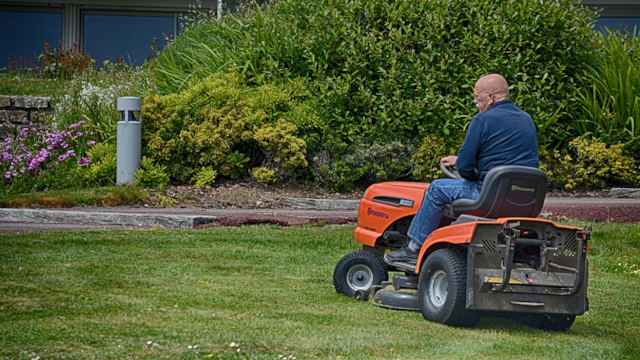Maintaining a Healthy Lawn Through the Winter
Mon Jan 16 2017 | maintenance | sod
Winter is the active season for Superior Fescue sod so look forward to a lush, green lawn for months to come. However, seasonal changes also bring new challenges. Your lawn may become more susceptible to certain pests and weeds such as annual bluegrass. By making simple changes to your lawn care routine, you can enjoy a beautiful, healthy lawn throughout the season.

Mow More Often
You may need to mow every couple of days to keep your lawn at the ideal height of 2-3 inches. If your lawn has grown well outside the range, don’t cut it down in one mowing. Never cut off more than one third of the blade height -- cutting too short can starve your grass and damage the root. Instead, cut your lawn several times, spacing out each mowing by several days, until it reaches the desired height.
If you mow often, make sure you minimize the amount of grass clippings you leave behind. A thin layer of grass clippings or “thatch” can help prevent weed growth and protect soil from frost, but too much thatch can block air and water from reaching the soil and create ideal conditions for pests.
Water Less Frequently
Since soil is less prone to evaporation in cooler months, you won’t need to water as often. Cold-activated grasses including Superior Fescue require half as much water in January than in July. Use the University of California’s Lawn Watering Guide to schedule proper irrigation for your climate zone. In general, you should water only if the top two inches of the soil have dried out. Dense clay soils, common to Southern California, hold moisture better but often require aeration for water to penetrate to the roots, especially in the colder weather.
Pests & Weeds
Proper mowing and watering will help keep your lawn free of pest and weeds. Some problems, however, are more common to the winter and can be prevented by adjusting your routine. If grass begins to “rust,” it may be infected with annual bluegrass. Mow frequently and be sure to remove grass clippings to cut down on rust-causing spores.
Unsightly mushrooms and abundant earthworms are a sign the surface soil is over-moisturized. Fortunately neither compromise the health of your lawn. Aerate regularly to enable irrigation to penetrate more deeply and allow the surface of the soil to dry out between waterings. This will help eliminate mushroom growth and encourage earthworms to burrow deeper into the soil.
Do you have questions? We're happy to help in any way we can. Contact us.